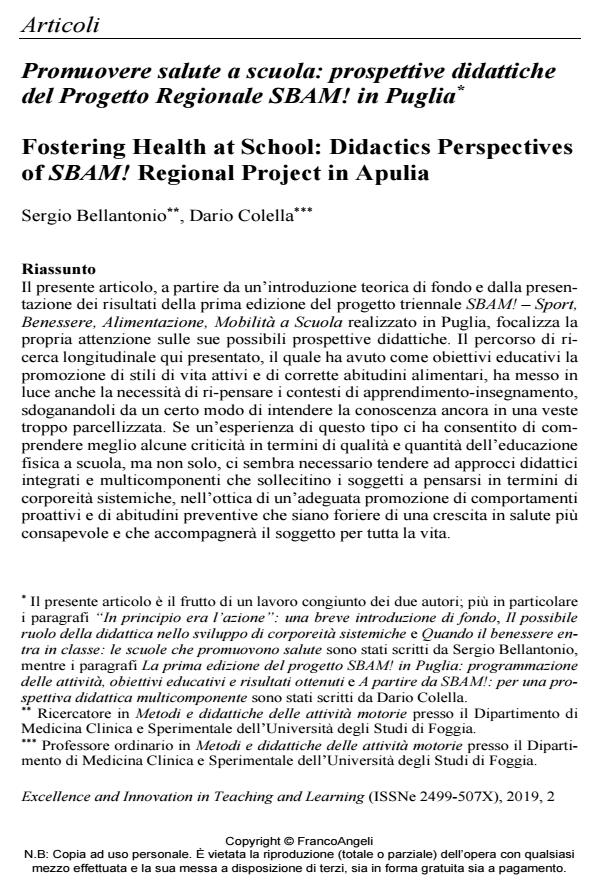Fostering Health at School: Didactics Perspectives of SBAM! Regional Project in Apulia
Journal title EXCELLENCE AND INNOVATION IN LEARNING AND TEACHING
Author/s Sergio Bellantonio, Dario Colella
Publishing Year 2019 Issue 2019/2
Language Italian Pages 13 P. 62-74 File size 186 KB
DOI 10.3280/EXI2019-002004
DOI is like a bar code for intellectual property: to have more infomation
click here
Below, you can see the article first page
If you want to buy this article in PDF format, you can do it, following the instructions to buy download credits

FrancoAngeli is member of Publishers International Linking Association, Inc (PILA), a not-for-profit association which run the CrossRef service enabling links to and from online scholarly content.
The paper, starting with a basic theoretical introduction and the presentation of the results of the first edition of the three-year project named SBAM! Sport, Wellness, Food, Mobility at School in Apulia, focuses the attention on its possible didactics perspectives. The longitudinal research here presented, which had as educational aims the promotion of appropriate eating habits and active lifestyles, highlighted the need to re-think learning-teaching contexts too, clearing them from a too parcelled certain way of understanding knowledge. If this experience has allowed us to better understand some criticalities about the quality and the quantity of physical education at school, but not only, is then necessary to foster integrated and multicomponent didactics approaches that urge individuals to think themselves as systemic corporeality. The aim is an adequate promotion of proactive behaviours and preventive habits that sustain a more aware healthy growth that will accompany the subject for the lifetime.
Keywords: Learning; teaching; physical education; didactics innovation; health promotion
Sergio Bellantonio, Dario Colella, Promuovere salute a scuola: prospettive didattiche del Progetto Regionale SBAM! in Puglia in "EXCELLENCE AND INNOVATION IN LEARNING AND TEACHING" 2/2019, pp 62-74, DOI: 10.3280/EXI2019-002004